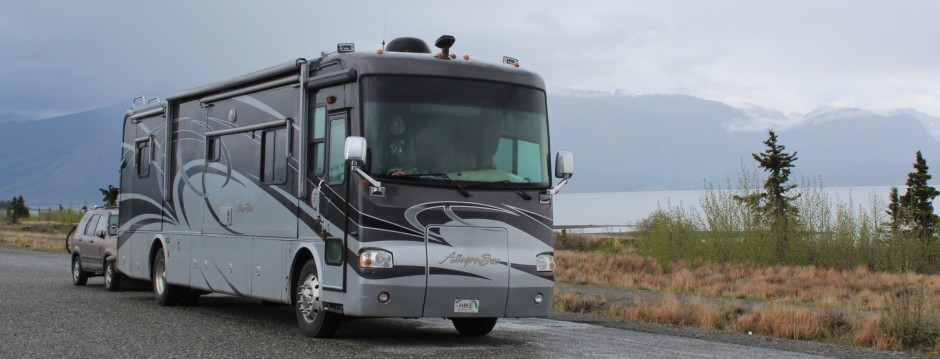At 8:10am we arrive in Irkutsk, Russia. It is a cold bleak day and, I think, a cold bleak city. Our new guide, Sveta, met us at the train station with two vehicles, one for the luggage and one for us. We had a tour of Irkutsk, not too impressive: some memorials to those who explored and helped open this north-eastern portion of Asia. Very much like Alaska and extreme northern Canada, Siberia was a mostly unknown wasteland until mid-nineteenth century. Also revered are those who pushed the Trans-Siberian Railway into existance, linking Moscow with Vladivostok on the Pacific Ocean and later with Beijing.
A bright spot in the early morning tour of Irkutsk was the “Decemberist Museum”. On 26 December 1825 a small group of aristocratic army officers and elite families in St. Petersburg attempted to overthrow Tsarist rule during the confusion after Alexander I died and before a successor took charge. Of course, they were no match for the Russian Army; about 50 were killed in the uprising, 5 more were executed and 121 were exiled to hard labor in Siberia. As was the custom of the time, many of their families followed; they located in Irkutsk to be near and support their husbands. These well to do and well educated wives established homes in which they lived under a sort of “house arrest”. Over the next 30 years they created schools, hospitals, theaters, newspapers and hosted musical and cultural parties. When Nicholas I died in 1855 many returned to St. Petersburg, some remained in Irkutsk and certainly their cultural legacy lives on in this remote land. This museum is in the Volkonsky House, Maria was the wife of exiled Count Volkonsky.
Sometime during this morning tour of Irkutsk, a second van arrived to take our luggage to Listvianka about 50 km north and directly on Lake Baikal. We moved into the Hotel Mayak. From a distance the hotel appeared to be relatively new (three years old) and nice; overlooking frozen Lake Baikal. A closer look revealed some of the flaws of total governement control and the complete lack of individual enterprise; the entrance mat curled to become a trip hazard, a doorman who only stands by the door, small, inefficient room design, no shower curtains, inability to get two keys per room, no fringe benies like drinking water, etc. Definitely not tourist oriented!
However, they did have a bar with cold beer and vodka which we taxed to the max. Some confusion ensued later as we settled up the bill. On the bar menu vodka shots were listed with the numbers 50 and 350 beside it. It appeared that Vodka was 50 Rubels per shot (about $1.50), the actual price 350 Rubels (about $10.50) makes a considerable difference when paying for the night’s fun. Just another good reason not to drink Vodka.
——————–
A cold blustery day awaits us as we begin our exploration of Irkutsk at 8:00AM. We haul our increasingly heavy luggage down a long set of cement steps, through a short dirty tunnel, then up another set of cement steps where we are asked by a couple of seedy looking guys if we’d like a porter. We declined!
We got a few hours of Irkutsk history. As the city became the jumping off point for exploration of Siberia, it grew in trade and probably it served as a warehouse for many of the goods transported back to Europe via Russia. Irkutsk was also the place where many of the political prisoners were exiled from St. Petersberg and Moscow. We visited a museum of the Decembrists – a group inspired by the French Revolution to plan a coup. They were discovered and exiled to Siberia. Eleven of the 100+ men’s wives followed them and set up homes in Irkutsk to be near their husbands. The museum was one of these homes. These revolutionaries and their wives and families were quite wealthy and well educated, and their stories are interesting. They brought a lot with them to Siberia in the way of education and ideas.
We were all intrigued by the log houses with their brightly decorated shutters and lintels. The logs turn a dark brown/black, but the shutters and lintels are painted bright colors, and under the eaves of many of the houses are carved lengths of “gingerbread” all around the house.
About 11 or 12:00, we head to our hotel about an hour down the road in a little tourist village on the edge of Lake Baikal – the largest fresh water lake in the world (by volume). Its surface area is about the same as Lake Superior, but it holds twice as much water.
When I asked Charlotte what impressed her about Irkutsk, she thought the location of the city on the river and the park we visited when we first arrived was most impressive. Along the river was a fence with several padlocks on it. It’s a local custom for a couple getting married to bring the lock to the fence and after attaching it and locking it, they throw the key into the river. She also thought the Russian Orthodox cathedrals were impressive with their icons on the outside of the buildings and the brightly painted and gold onion domes. Fran
